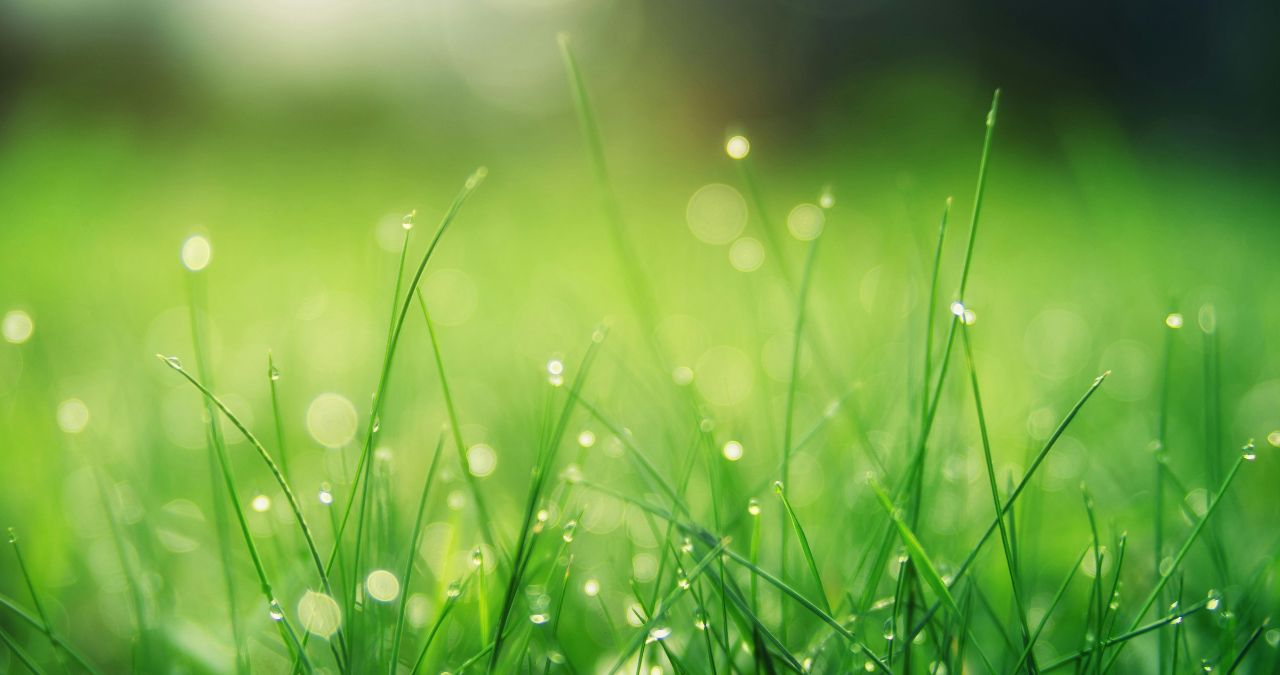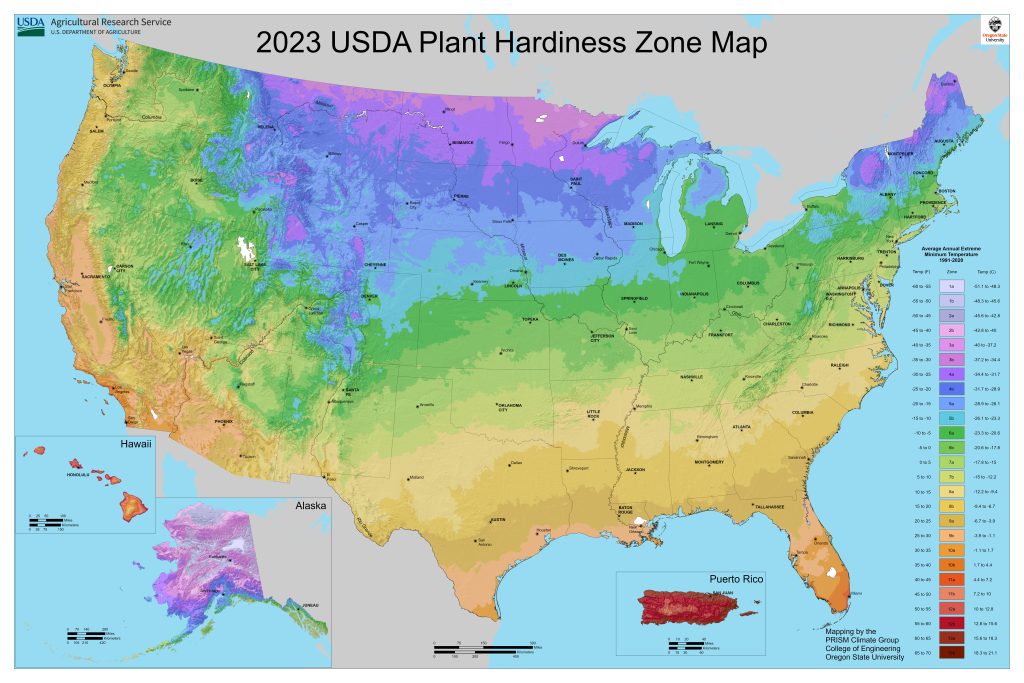Looking to maintain a vibrant lawn while keeping water usage to a minimum? Choosing the right type of grass is key. With water conservation and efficiency at the forefront, finding grass varieties that thrive on less water has become increasingly important. Whether you’re a seasoned gardener or a newcomer to lawn care, understanding which grasses require the least water can help you create a lush, sustainable outdoor space. In this blog, we’ll explore low-water grass options, providing insights to help you make informed decisions for a beautiful, water-efficient lawn.
Cool Season vs. Warm Season Grass
Before selecting a species of drought-resistant grass, you must first determine whether your area requires a cool season grass or a warm season grass. Here in eastern Nebraska, we are in the USDA Plant Hardiness zones 5b & 6a, so we need to select a cool-season grass.
What Type of Grass Needs the Least Water?
Cool Season Grasses
Kentucky Bluegrass
One of the most common types of grass in our area, Kentucky Bluegrass has a rich color and a fine texture, making this lawn both beautiful to look at and soft on your bare feet. It also handles foot traffic well, making it an ideal lawn for kids and pets. Kentucky Bluegrass spreads readily through underground rhizomes, giving it tremendous self-healing properties. Bare spots from damage or yard work will fill in quickly on their own, without the need for seeding. Of course, this natural spreading can also creep into your landscaping beds, which can increase your time spent maintaining the lawn.
Kentucky Bluegrass does have some drawbacks. It is more susceptible to fungus and disease than other some other species of grass, and sustained temperatures over 100 may cause some wilting.
Fescue Grass
Another common and reliable drought-resistant grass for eastern Nebraska is Fescue. Great strides have been made in the last 15 to 20 years, developing varieties of fescue with thinner blades, that more closely resemble the beauty of a Kentucky Bluegrass.
The edges of the blades are still a bit rougher than Kentucky Bluegrass, but while a fescue lawn may not be as soft, it will hold up to more rough-and-tumble play than the Bluegrass. It also tolerates the heat better.
Another point in favor of fescue is its resistance to fungus and disease. Fescue is a clump grass, so it won’t invade your flower beds or the neighbor’s lawn, but that also means that any bare patches will not fill in on their own and will need to be seeded.
Blends
A common way to get the most out of your lawn is to use a blend of different seeds. Nature’s Helper uses a blend of Bluegrass and Dwarf Fescue that is specifically formulated for our area to produce a lawn that is thick and lush while being resistant to disease and drought. Our blend performs well in both sun and shade, making it a great choice for any yard condition.
Zoysia Grass
This species is a popular choice with homeowners due to its resilience to drought. This type of grass is suitable for growing in a wide array of conditions. It has a deep root system, allowing it to feed on deep water supplies rather than surface water. Zoysia will grow into a very dense cushiony lawn, but it is also very invasive, choking out bluegrass and fescue, not only will it invade flower beds – it will compromise any adjoining lawns.
More of a warm season grass, Zoysia will give you a nice, drought resistant lawn in eastern Nebraska, but it’s important to note that it will be the last to green up in the spring – usually not until May – and it will go dormant much earlier than cool season grasses – around September. Meanwhile, Zoysia Grass can perform as more of an evergreen lawn in warmer, southern areas of the country.
Warm Season Grasses
Bermuda Grass
This hardy, drought resistant species is a great choice for a low-maintenance lawn. It stands up to heavy foot traffic and is a great choice for warmer regions in the United States.
Bermuda isn’t without its drawbacks. It requires more water than other species of lawn grasses on this list. Because it is not a cool-season grass, it doesn’t tolerate cold climates well.
This type of grass is a great choice for the homeowner who wants an evergreen lawn throughout the winter. Its hardy, weather-resistant properties make it a great choice for southern states and is a common species used in golf courses as well. It reduces watering costs significantly, with the roots extending up to eight feet deep into the ground.
St. Augustine Grass
This warm-weather grass species is a good choice for homeowners who want a low-maintenance lawn. It grows slowly and doesn’t require much mowing during the summer months. However, this species needs soil offering good drainage as it waterlogs easily, causing it to turn brown and die.
St. Augustine is a shade-tolerant species. A good choice if you have trees in the yard that cast shadows on the lawn during peak sun hours. The fertilizer requirements are low; one seasonal feeding is all it takes to keep it looking great.
Buffalo Grass
This warm weather grass species prospers in gardens that experience low rainfall during the summer. It’s a popular choice in the southwest. The drawback of buffalo grass is that it tends to lose its color during the winter. This is when monthly rainfall gets below one and a half inches of water per month.
Buffalo grass grows slowly and to a low height, meaning it has minimal mowing requirements during the summer. It’s a good choice for homeowners who want a low-maintenance lawn.
Bahiagrass
This grass species is great for yards with poor soil conditions. It’s common across southern coastal regions. Bahiagrass isn’t as drought-resistant as other species on this list. However, it holds up well to heavy foot traffic and doesn’t need much maintenance during the summer.
Bahiagrass grows well in poor soil conditions and prefers humid regions of the US. It’s not the best choice for shady lawns, so southwestern homeowners should consider another variety like St. Augustine.
Blue Grama
This species is almost as drought-resistant as buffalo grass and offers low maintenance requirements for the homeowner. Blue grama needs as little as seven inches of water per year to thrive, making it a great choice for gardens in southern California.
Many drought-tolerant grass varieties are available, giving gardeners a choice for a low-maintenance lawn that looks great without a high water bill. The United States Department of Agriculture provides a helpful tool (USDA Plant Hardiness Zone Map) for choosing what kind of grass you need depending on where you live.
Nature’s Helper – Lawn Sprinklers Omaha
With so much drought in recent years, it’s an essential step to install a sprinkler system designed for maximum water efficiency that still delivers a lush, healthy lawn. For more than 25 years, Nature’s Helper has been helping Omaha residents turn their lawns from ordinary into extraordinary. Through designing and installing residential and commercial underground sprinkler systems, we’re committed to providing innovative solutions and outstanding customer service every single time.
Are you noticing brown spots even with a drought-resistant lawn and a water-efficient sprinkler system? Periods of drought can reveal a poorly designed sprinkler system. At Nature’s Helper, we don’t just get water on the lawn, we focus on hydraulics, spacing, and nozzling to put down 1/3” of water on the lawn as evenly as possible every time your system runs. If you find yourself pulling hoses even with an irrigation system, call Nature’s Helper – we can help you!
To request service or schedule a free installation estimate, contact us online or call us at (402) 334-2625.






